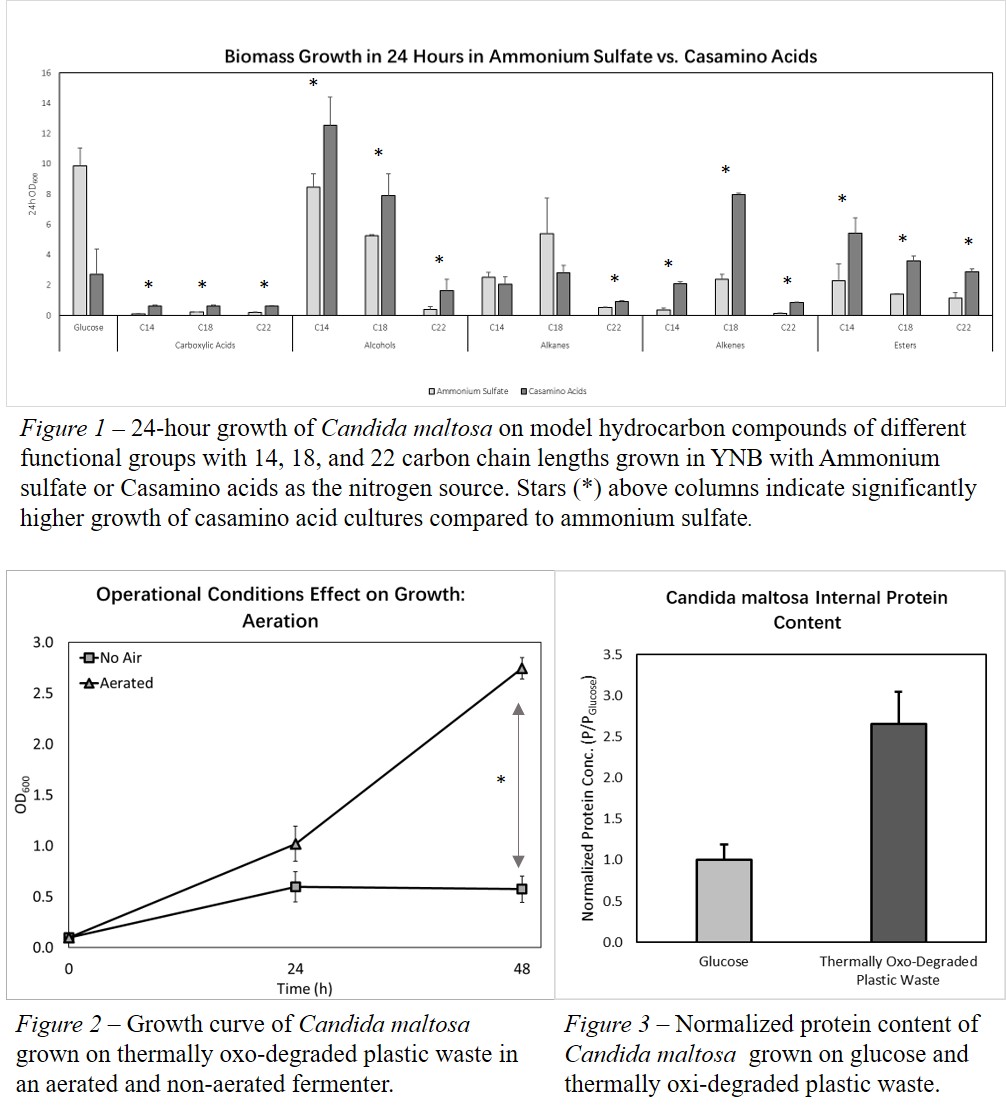Plastic waste has been a long-standing environmental and societal issue in the modern world, and the subject of plastic recycling is extensively studied. Biological upcycling of plastic waste is an attractive topic and the prospects of using microbial cell factories include sustainability, circular economy, and a potential for production of value-added products. While a variety of organisms have been studied for their ability to utilize plastic waste, the complexity and stability of molecules present in plastic extend the process time and decrease its yield. The oleaginous yeast
Candida maltosa is one of the species that has been studied for its ability to utilize representative hydrocarbon molecules. While
C. maltosa’s impressive ability to grow on hydrophobic substrates as carbon sources introduces the possibility of biological upcycling plastic waste, the efficiency of the process needs to be targeted to make it a viable option for scale-up. To this end, it is essential to look into media components and their effects in the uptake process, while strategizing nutrient sourcing to enhance performance by replacing conventional media components with those that have a more pronounced impact on the yield. This process can also help in identifying potential product targets for the valorization of plastic waste into value-added products. Looking at the molecular impacts of nutrient optimization can provide valuable insights into the use of microbial systems for plastic upcycling.
Results and Conclusions
In this study, various organic and inorganic nitrogen sources including ammonium sulfate, urea, and casamino acids were tested to determine their effects on biomass production when hydrocarbon molecules are used as the sole carbon source in the media. Yeast cells are equipped with a nitrogen catabolic repression system that senses the type of nitrogenous compounds present in the environment and use them according to cell selectivity. Ammonium sulfate is expected that it would result in the highest growth possible. Urea, which is an organic nitrogen source and the main component of urine can be used to replace ammonium sulfate in this process without sacrificing the yield. In addition to supporting growth, urine is a waste stream that can be effectively utilized in this process.
Furthermore, when hydrocarbon-based substrates were used in conjunction with replacing ammonium sulfate in the media with casamino acids, a general trend of increase in final biomass production was observed, which is especially important for longer-chain hydrocarbon compounds. Hence, a replacement of the nitrogen source is considered an effective way to increase the uptake. The use of casamino acids as the sole nitrogen source for the process was shown to also affect intracellular protein accumulation in most cases, compared to when glucose was used as the carbon source. Proteomics data shows that proteins involved in fatty acid production pathways are found in the cells grown in hydrophobic substrates which can point to a valuable set of byproducts that can be targeted for valorization.
Aside from this, phosphorus and other components of the media were also studied for replacement and optimization. Different phosphorous compounds were also tested at various concentrations and proved not to have an effect. Also, all the vitamins and trace metals in standard media were replaced by a human multivitamin which resulted in an increased growth, while significantly reducing process costs. Process conditions such as aeration also showed a significant effect in increasing biomass production.


